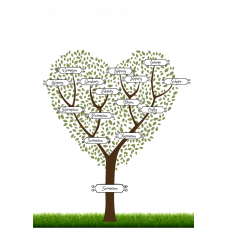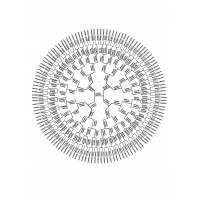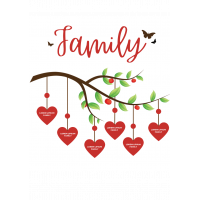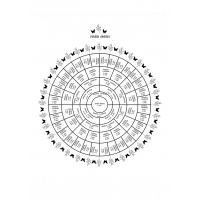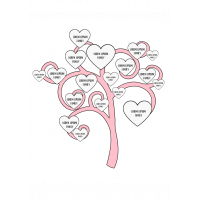Choose Genealogy Charts and Forms Wisely
If you're in the process of detailing your genealogy, you need charts and forms to present the information clearly. You don't want the efforts you put into unearthing every detail to go in vain by using a poorly sketched family tree.
Genealogists, historians, archivists, and individuals rely on charts and forms to keep crucial details about ancestors or relatives in their family research. For that reason, you need to understand the best way to present your information and how to find the best diagram for you.
Below we look at considerations that determine whether you need a form, tree, or chart and the different types of charts available. We also have a step-by-step guide on filling in the chart forms for a clear genealogy presentation and preservation.
Key Takeaways
- The type of genealogy chart or form depends on several factors you must keep in mind if you want the best results.
- We have simple charts that you can use if you want to teach genealogy to kids and others for advanced study.
- Your budget and genealogy purpose should help you determine your choice of charts and forms to use.
Considerations When Choosing Your Genealogy Charts and Forms
The type of genealogy chart or form depends on several factors you must keep in mind if you want the best results. Check out some factors below before you print out that chart.
1. Your Genealogy Purpose
The details to include and the template to use to present them should all revolve around the purpose of your research. We have simple charts that you can use if you just want to teach genealogy to kids and others you need for advanced study. Suppose you're a genealogy student in college, and you have an assignment requiring an in-depth analysis of your 5-generation family hierarchy from one ancestor. In this case, it would be advisable to go with the ancestor chart, which details one individual and the rest of the family from them.
2. Your Budget
Every research requires some financial backing to print the working sheets and commute from one archive to the other. Besides, you may need the help of a genealogist to dig into crucial details and present them on the most suitable template available. Usually, simple genealogy research requires minimal financial intervention as you likely have the names and dates of your relatives off-head. If not, aunts and cousins are a call away, and you can always reach out to clarify these details. However, to explore your family lineage up to the fifth great-grandparents, you may need to dig deeper into your pocket to incorporate a genealogist and create an extensive family chart.
3. The Intended Design
For your genealogy chart or form to serve your purpose, it must be in the proper structure and theme. You don't want a family tree poster antagonistic to the house or office wall theme. Charts and forms have different designs, and choosing the right for your family will serve the intended purpose while keeping relatives and kids engaged.
Types of Genealogy Charts and Forms
Now that you have all the necessary considerations, choose any of the following designs to present your genealogy. Each of the examples provided below has a set objective and a structure suitable for different family structures.
1. Ancestral Chart
As the name suggests, this chart focuses on a single ancestor detailing all the descendants in generations. Usually, an ancestor chart includes each individual's name, important dates, and places. Unlike family trees, ancestor charts are pedigrees expanding horizontally to whatever scope you intend to explore.
2. Family Group Sheet
A family worksheet differs significantly from a pedigree chart or a family tree. It's a labeled form where you fill-in crucial details about individuals in your family before you present it on a pedigree or a family tree. Chiefly, a family group sheet focuses on a single large family detailing additional information for the father and mother, including naturalization, military service, cause of death, etc.
3. Traditional Family Tree
The lack of more color and modern design makes this tree format traditional. A traditional family tree is a large black tree on white paper with white gaps to show generations and spaces to fill in details for every individual. This has come to be replaced by the modern version discussed below.
4. Modern Genealogy Tree
These are what you will find in numbers on our site. They are colored and stylish family trees with spaces for each individual and generation left out as fruits or branches. Families prefer these for indoor décor and engagement, especially among kids. Besides, you can edit our modern genealogy trees on our site and add a relative, generation, or decorative artwork.
Genealogy Charts and Forms
-
$4.95
Related Products
Create Family Tree Free
Create Family Trees Free Templates AvailableCreating a printable family tree is easier said than don..
$4.95
Genealogy Tree Template
Many Generations Genealogy Tree Template If you're considering conducting genealogy research an..
$4.95
Free Fillable Family Tree Template
Free fillable family tree template is available online which lets you enter the necessary data and i..
$4.95
Large Family Tree Template
Print A Large Family Tree TemplateFilling in the details of a huge family would be a hassle on a run..
$4.95
All Trees: Family Tree Templates

